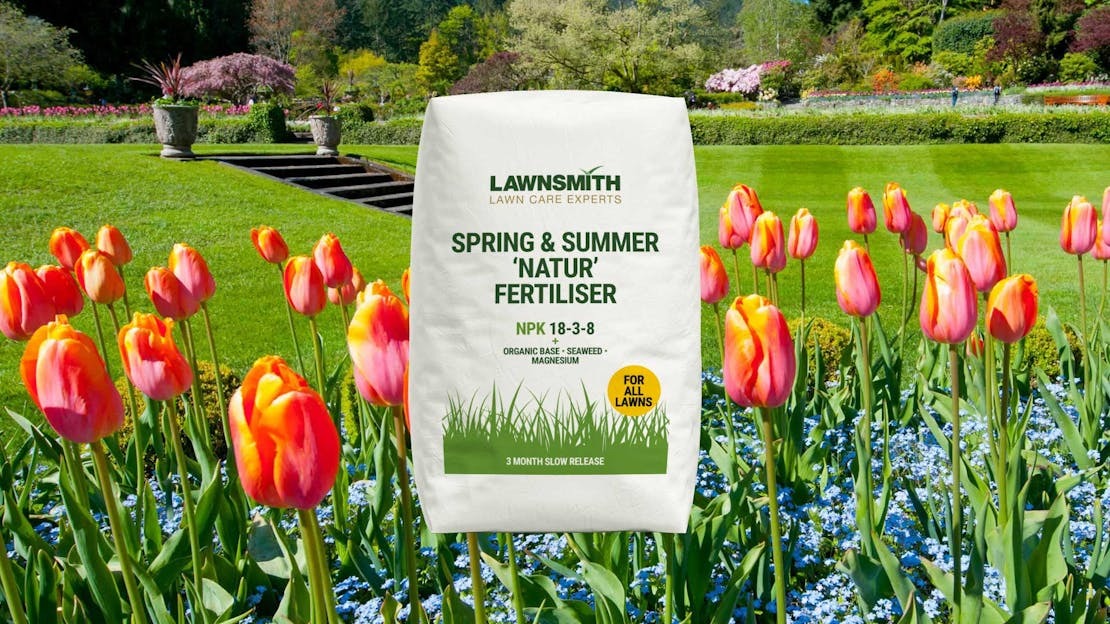
Best Lawn Food for Spring
Knowing what to use to feed your grass in spring can make a big difference to your lawn whilst saving you time and money.
The grass won’t use the fertiliser if it can’t grow due to low temperature, lack of moisture or air around the roots. If there is adequate water and air at the roots then growth will speed up as temperature rises through the spring.
Because fertiliser, water and air need to be in balance, just like a balanced diet for you or me, too little of one causes growth, health and stress issues for the plant. You can therefore waste a lot of money on adding too much fertiliser when perhaps your lawn needed aerating or watering and just a normal high quality feed.
When feeding in the spring your goal is to provide enough nutrients so the grass can:
- Recover from winter stresses
- Develop deeper roots so the grass can acquire water deeper in the soil as the soil and weather dries during summer
- Grow leaves which are the solar power plant of the grass
- Control moisture loss during drier weather
- Replace leaves lost when mowing
- Build disease resistance
- Enable the grass to recover and repair from use
- And perhaps the best reason of all ‘To make it look good’
Slow Release Granular Lawn Fertilisers for Spring
Hopefully you appreciate how important that first feed of year is. For all this to happen you ideally need a broad range of nutrients in your fertiliser which should feed slowly and consistently for at least 2 and preferably 3 months. For less labour and to cover the summer feed you could use our Extra-Long fertiliser that will continue to feed for up to 6 months.
Your feed needs to be a granular type which dissolves into the soil. This helps the roots grow deeper as they search for the food that has dissolved and been washed down into the soil by rain or watering.
Liquid Feeds for the Grass in Spring
These are generally unsuitable until about May for the following reasons:
- The grass is quite hungry in spring and has more demand than you can supply with a liquid feed
- Liquid feeds are best taken in through the leaf and due to cool spring temperatures this is less effective
- The choice of nutrients is limited so the grass may not be getting a good balanced diet
Feeding Lawns on Clay Soils
Clay soils are slightly richer in nutrients than sandy soils and will also retain many nutrients longer. This means you don’t need such a strong feed or a feed that contains phosphate in the spring. This saves money!
Nitrogen (N) and potassium (K) are very important as are some nutrients that are more like vitamins such as magnesium (Mg) and seaweed which improve colour and health. See the options below which are available in our shop.
Feeding Lawns on Loam, Sandy or Chalk Soils
These soils tend to hold air well but water and nutrients less well. Generally sandy soils will hold fewer nutrients over the long term so you need to put them in. This also means food for sandy soil is slightly stronger than those for clay soils.
As well as the nutrients we find in fertiliser for clay soils above you now also need phosphate (P). This component helps roots develop which is not held in sufficient quantities in sandy soils and is very important for getting the roots down into the water that drains deep in sandy, loam and chalk based soils. See the options below which are available in our shop.